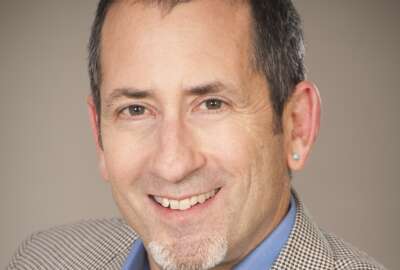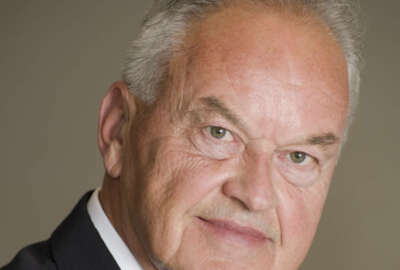
Federal government and private sector collaborations
When it comes to executing an executive order, Senior Correspondent Mike Causey says the phrase "the more the merrier" applies.
When the government and private citizens get together on a project, large or small, great things can happen. Or not. In today’s guest column, a public relations professional gives some examples and tips for ensuring that such joint efforts are an “us” rather than a “me” project.
From a very early age, people associate the word “more” as something positive. A child wants more food, more toys, more time and the outcome is viewed as positive or making something better. As the years go by, the phrase “the more the merrier” becomes part of our lives. As children playing we knew more kids made playing that much more fun. As teenagers we knew that the more people at a party, the better it will be. As young adults networking, bringing more people together, became one of the keys to success, whether in business or relationships. As one becomes more of an adult the phrase “more the merrier” seems to become used less and the focus turns to me, all about me, my program, my project, I want credit for me. The idea of including “more” into everyday adult life slowly turns into a negative, meaning more hassle, more work, more people, to just name a few examples. But sometimes having more smart people around the table makes our job more enjoyable because we can learn from what others have learned and build on their success.
When President Barack Obama signed Executive Order 13693 — Planning for Federal Sustainability in the Next Decade — he outlined a series of strategic and tactical goals and targets for the federal governmental entities. The executive order stated that executive departments and agencies needed to find ways to be more efficient in reducing greenhouse gas emissions and the impacts of climate change by targeting energy, water, fleets, buildings and acquisition management.
While the Executive Order 13693 is definitely well-defined, what it lacked focus on was how the goal of being more efficient was going to be accomplished and who might sit constructively at the table to help achieve that goal. When “more” is wanted sometimes you can’t get “more” without engaging and collaborating with those in the private sector that can bring their experience and knowledge to the federal table. What the executive order could have done a better job of is recognizing and acknowledging that sustainability goals and action already on the top of the minds of many corporate leaders in the private sector many of which are federal contractors. In order to reach their goals, they are creating and finding ways to more effectively and efficiently do so. This could easily be shared with the federal government allowing the government access to corporate learnings and knowledge that may not have been considered. Leading back to the phrase, “the more the merrier.”
More commentary
Take for example an effort last year that was led by the Air Force Research Laboratory (AFRL) that organized a private-public project team that included the National Center for Defense Manufacturing and Machining (NCDMM), the members of the Mission Ready Sustainability Initiative (MRSI) and coordinated by CTC Corporation. The team members contributed the expertise and experience of companies like Lockheed Martin, GE Aviation and BASF, to assist the Air Force Sustainment Center (AFSC) by identifying three significant energy users at the Ogden Air Logistics Complex and demonstrating through private and public sector collaboration ways that energy and carbon could be reduced. Once again enforcing the idea, “the more the merrier”. In addition to the joint effort, a collaborative MOU has recently been signed between the U.S Army and the U.S. Air Force to address through information and technology sharing, energy efficiencies that will save both services a lot of money.
Another opportunity of, “more the merrier”, relates to what is called resource efficiency, others call it the circular economy, basically taking what was once considered a potential waste product, that would have been landfilled, and finding a way to negotiate a deal between a willing seller of a “waste” product and a buyer. Mathy Stanislaus, the assistant administrator for the Office of Land and Emergency Management of EPA, has been leading an effort inside the federal government that has highlighted the work of the auto supply chain through the Suppliers Partnership for the Environment (SP), whose members include GM, FCA, Ford, Toyota, JCI, Lear, Bosch, Denso, Waste Management, Covanta and small medium enterprise companies. EPA has a formal liaison relationship with SP. This effort is finding ways to address and expand resource efficiency activities both within the United States and with G-7 countries. Once again, another opportunity that would have been missed had governmental leaders only been focused on communicating and working only with executive agencies and departments.
Lastly, the General Services Administration (GSA) is aggressively pursuing the goals of the President’s Executive Order and for the first time is addressing emissions in the supply chains through its Green House Gas Reporting Program (GHGP). A major focus of GSA is promoting sustainable acquisitions that includes: Programs such as Energy Star and recycled content; EPA programs such as SmartWay and WaterSense; and, EPA recommended third-party specifications, standards and labels. All of those programs are collaborative programs providing the opportunity for engagement and learning from and with the private sector.
So what is the bottom line? Isn’t it time to recognize that the “more” the private sector is offered the opportunity to work with and engage with the federal government in reaching sustainability goals everyone wins? The federal government has budgetary constraints that must be addressed, just like the private sector, “more” must be done with less staff and resources, cost is always a consideration for the both the public and private sector, but as we all are learning there is such a thing a short-term thinking instead of life-cycle understanding and maybe the cheapest approach is not always the cheapest cost in the long run.
How does the federal government get “more” learning and better understanding of challenges from the private sector? You get there by asking the right questions, with the right people, around the right tables and with the right authority to make change happen. And, if you do that, federal dollars can be utilized more wisely and the environmental impacts of federal government activities can be reduced. It is time for “more” collaborative learning and understanding and finding ways to make our government work more effectively and efficiently. There is no “I” in collaboration. “
— Steve Hellem, Navista The Public Affairs Group, Inc.
Nearly Useless Factoid
The idiom “fox in the henhouse” can be traced back to a similar phrase and concept from Ancient Rome: “Ovem lupo commuter” or “to set a wolf to guard sheep”.
Source: Historically Speaking
Copyright © 2025 Federal News Network. All rights reserved. This website is not intended for users located within the European Economic Area.
Mike Causey is senior correspondent for Federal News Network and writes his daily Federal Report column on federal employees’ pay, benefits and retirement.
Follow @mcauseyWFED




